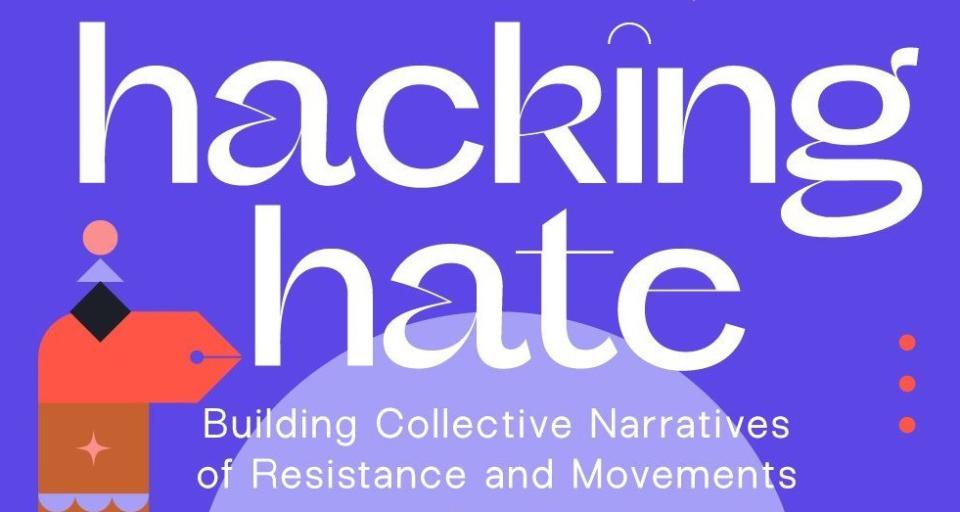
For at least a decade or so, the internet, in particular the social media, has been a space that women and people from marginalised groups inhabit and use for expressing themselves, organising and promoting their narratives, and mobilising movements across the globe.
Parallel to that, the internet has turned into a place that we have never hoped for before. We all thought the internet was a new alternative place that was open, equal, and democratic, where each and every one of us can express ourselves including voicing our dissent freely and safely. But the internet we see today is anything but that. It has become a haven for many forms of violence. And with how digital technology works, these forms of violence are often facilitated, protected, widely perpetuated, and at the end normalised.
We all thought the internet was a new alternative place that was open, equal, and democratic, where each and every one of us can express ourselves including voicing our dissent freely and safely. But the internet we see today is anything but that.
In the last decade, we have witnessed growing religion-based hate speech online against groups that are seen as minorities or people that are politically, socially, and culturally targeted. In religion-based hate speech it isn’t only religions that are seen as minorities that are the target of hate speech, but also other identities that are seen as “violating” the values and norms of the religions that regard themselves as the majority. Many times that hate speech even results in violence and destruction. But is religion-based hate speech a new phenomenon? No. It has been happening even before the internet came into existence. It has long trajectories through time, places, and actors. It has been there, but at certain times it escalates. In the last decades, we have seen different tides of religion-based hate speech and violence around the globe. Many argue that this was caused by the revival of religions and religiosity in recent decades, which creates intolerance, but if we look deeper, the root cause is actually more political. To understand it, we need to unpack and interrogate hate-speech and how it comes about. While many believe that hate speech is rooted in hate, we need to understand that hate and hate speech are not the same thing.
Hate is a feeling or emotion, although it is often not a simple one and although it may look personal, it is politically and socially constructed. And although hate draws lines and creates tension between those who possess the hate and those who are the target of the hate and results in ‘othering’, in itself hate is not always manifested into actions such as hate speech or violence. There are many restrictions within individuals or groups that restrain them from turning hate into hate-speech or acts of violence—such as social and cultural norms, as well as perhaps, in some contexts, laws.
Hate is politically and socially constructed
Hate speech, as Dr. V. Geetha puts it in the APC Challenge Lecture Series, is something that is calculated to denigrate, degrade, and disrespect people based on their religious or political beliefs, social identities such as race, caste, gender, sexuality, ethnical background, etc., and is often conveyed with force and feeling so as to construct the person or groups against whom it is directed as an “other”, and behind it stands a long history of organising and organised hatred.
Religion-based hate speech has been a tool for those with and/or in power to reinforce their power and achieve other political agendas, and this often influences regular people and is further internalised and normalised within the persons and the society. More often than not, religion-based hate speech incites violence as we have seen it, even if the hate speech is packaged in what seem to be non-violent messages.
More often than not, religion-based hate speech incites violence as we have seen it, even if the hate speech is packaged in what seem to be non-violent messages.
The spread of hate and hate speech also have always been started with propaganda that more often than not are based on political, cultural and religious lies, misinformation and disinformation. In the context of religion-based hate speech, it is based on morality derived from narrow interpretation or even deliberate misinterpretation of the teachings. And the motivation is clear, which is to preserve the systemic power and control over certain groups of people whom the hate speech is being targeted at and to some degrees over the larger population.
Because of that, hate could mean different things to different people and communities. It is very contextual depending on the political, social, cultural and religion situation of each place and the way it is expressed also varies. Thus the impacts would also be different to those who received it, even between oppressed minorities. Therefore the responses to hate and hate speech are also very contextual and differ from place to place.
The responses to hate and hate speech are also very contextual and differ from place to place.
We have known that the internet is not the cause of religion-based hate speech, but is definitely facilitating and exacerbating it. The hate speech that we are presented with online is a reflection of what we experience on the ground, only worse. It is because of the nature of the internet, such as its ease, fast transmission across platforms and its persistence, that it allows people to be anonymous, also encourages people to commit hate speech and incite violence. Although as feminists we advocate for anonymity as an important strategy for protecting people when expressing themselves and their voices of dissent, especially in more repressive countries, we also have to admit that this has been as a tool to spread hate speech and been used as an excuse by the authorities not to deal with the perpetrators.
While we are seeing the online commercial platforms become a convenient breeding ground for hate speech, we must further examine their. The tech companies behind all of the online commercial platforms with their algorithmics arsenal have been intentionally providing the space to be an amplifier of hate speech, despite their public statements or alleged commitments to combat hate speech. It is because they are profiting from it directly and indirectly. Hate speech posts attract a higher number of engagements that can be used to generate profits through ads, and monetising our emotions or reactions to contents such as hate speech and the trauma that is caused by it is profitable. (Megan Boler of University of Toronto has stated, according to Now Toronto, that the marketing industry and Silicon Valley have more data on psychology and cognitive science than researchers and scientists do.)
For a very long time, we have been fighting for the responsibility and accountability of all parties that play roles in causing and perpetuating hate and hate speech, i.e. those in power be it the government or the tech corporations but we have yet to see any political will from them.
The impacts of hate and hate speech are real and can be very severe, we can’t wait for them to make a meaningful systemic change for us. Oppressed groups everywhere have to take matter into their own hands. Coping with impacts of hate speech, strategising responses, building own narratives and movements. In this edition, the authors and artists show different meanings of hate and hate speech experienced by their communities and their response. The transmen communities in Indonesia choose to have a collective process of healing and empowering each other through working together with allies to document their experience with hate speech as written in a piece by Raiz and Julia. Eni and Efi show direct solidarity between women to combat online gender-based violence (OGBV) experienced by a dating app user Moslem woman. Women and girls in the Philippines opted a more upfront move in combating OGBV by calling out sexist and hateful comments and campaigning against it widely as drawn beautifully in a series of comic by Cheryl Hukom and the Foundation for Media Alternatives (FMA). Moslem scholars from Srilanka as interviewed by Sara in a podcast suggested looking at alternative interpretations of Islamic teachings that are more peaceful and promote equality. In a mixtape, John and Ada from the Philippines show a more reflective approach asking people to be more compassionate towards people who are considered as other adn different, and to ask us to stand our ground in fighting for our rights. Lastly, Serene from Malaysia rightfully take us to imagine a feminist internet that is truly inclusive, diverse and equal.
A challenge for all of us to do.
- 1993 views






Add new comment